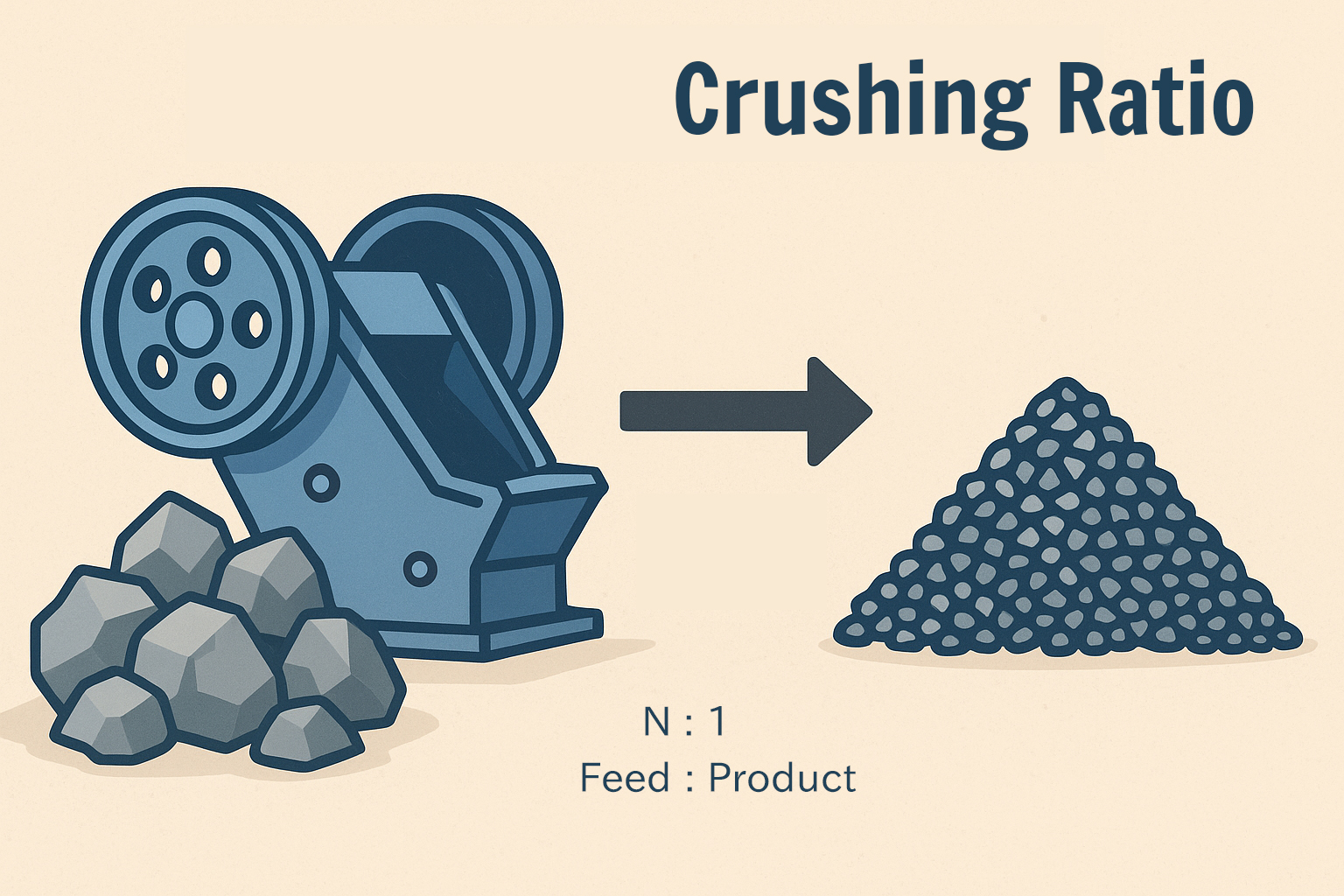Crushing Ratio
The Fundamental Metric of Crusher Performance
Crushing ratio represents the core efficiency parameter for all size reduction equipment, quantifying the relationship between feed material dimensions and final product size. This critical calculation determines a crusher's capability to transform raw materials into usable products while influencing energy consumption, throughput capacity, and final product quality across mineral processing, recycling, and aggregate production applications.
Mathematical Definition and Calculation Methods

The crushing ratio (CR) expresses the proportional reduction achieved through the crushing process, typically calculated as the quotient of feed size to product size. Industry recognizes two primary calculation methods: the geometric ratio based on particle dimension (CR = Dfeed/Dproduct) and the mass-based ratio using screen analysis (CR = 80% feed passing size/80% product passing size). Jaw crushers typically achieve ratios of 4:1 to 6:1, while cone crushers may reach 8:1 in tertiary applications.
Technical Implications for Equipment Design
Crusher geometry directly correlates with achievable reduction ratios - steeper chamber angles enable higher ratios but reduce throughput capacity. Modern crushers incorporate variable geometry chambers that dynamically adjust crushing ratios between 3:1 and 10:1 during operation. The relationship follows the power law: Energy consumption ≈ (CR)1.5, making ratio selection crucial for operational economics. High-performance crushers optimize liner profiles to maintain consistent ratios as wear occurs.
Operational Impact on Production Systems
Proper crushing ratio selection balances multiple factors: higher ratios reduce downstream equipment needs but increase specific energy consumption by 15-30%. Multi-stage systems typically distribute ratios across stages (3:1 primary → 5:1 secondary → 8:1 tertiary) to optimize overall efficiency. Real-world applications demonstrate that exceeding a crusher's designed ratio range accelerates wear rates exponentially while producing undesirable fines generation and particle shape degradation.
Advanced Optimization Techniques
Modern control systems continuously calculate actual crushing ratios using laser particle size analysis, automatically adjusting closed-side settings to maintain target reduction levels. Some advanced designs incorporate dynamic ratio compensation that accounts for feed material variations - hard rock operations may reduce ratios by 20% compared to soft materials while maintaining product specifications. The latest research focuses on variable ratio crushing that adapts in real-time to feed characteristics and downstream demand.
Industry-Specific Ratio Applications
Aggregate production typically employs 5:1 to 7:1 ratios to optimize particle shape, while metal ore processing pushes to 10:1 for maximum liberation. Recycling applications maintain lower ratios (3:1 to 4:1) to preserve material properties. Emerging technologies like high-pressure grinding rolls achieve ultra-high ratios (50:1) through particle-bed compression rather than impact crushing, revolutionizing certain mineral processing circuits.